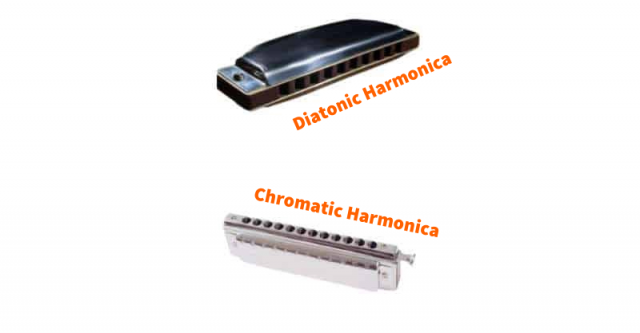Harmonicas are a great way to learn how to play music on your harp. In this guide, we'll explore the differences between diatonic and chromatic harmonica models so you can choose which one is right for you! Harmonicas are a staple of the blues and jazz genres. They can be played by any musician, from beginners to experts. If you’re interested in learning how to play the harmonica, check out our guide on which model is best for beginners!
Types of harmonicas
There are many types of harmonicas, and they can be divided into three main categories: diatonic, chromatic, and tremolo.
Diatonic harmonicas are the most common type of harmonica for beginners to learn because they're easy to play. They're also generally less expensive than other types. The difference between a diatonic harmonica and its alternate counterparts is that in a diatonic instrument, there are only seven notes per octave (eighth-note intervals) instead of twelve like on most other instruments with more than one octave per key signature.
So you won't have quite as much room for improvisation when playing along with songs or melodies that use those extra six notes! Some people prefer this style over standard tuning because it gives them more room within their range without having too much static distance between notes; however, this makes learning chords harder since they will sound like dissonant clusters rather than individual notes being played simultaneously with each other at regular intervals."
Diatonic vs. Chromatic
The chromatic harmonica is the most common type of harmonica found in the marketplace. It has all of the notes of an entire octave, with no sharps or flats. This means that you can play any key with this instrument, but it's not as easy to learn as a diatonic harmonica because there are so many different combinations of notes available for each key.
You'll notice that there are two parts to this instrument: one for melody and one for harmony. The melody part plays low-pitched, single-note melodies while the harmony part plays high-pitched chords overtop them (usually).
Diatonic Harmonica
Diatonic harmonicas have 10 holes and are tuned to the key of C, G, D, A, E. They can play in any key because they have a diatonic scale (a set of notes that fit into one octave). The harmonica is used for blues and folk songs because it makes a good accompaniment to vocals or acoustic instruments such as guitar and banjo.
The player blows air through an open hole into the hole at the top of his instrument while holding down two finger holes on each side of this hole with his index fingers (the other two fingers are held down to control volume). This creates sound waves that travel up through two reeds inside each instrument until they reach their destination: your mouth!
Chromatic Harmonica
The chromatic harmonica is a full-range instrument that can play in any key. This means you will be able to play any scale on it, as opposed to the diatonic harmonica which only allows you to play in one key (major). It also has more notes and holes than the diatonic model, so it's easier for beginners who are learning how to play this type of instrument.
The downside? Chromatic harmonicas are more difficult than their smaller counterparts because they require skillful fingering; however, there are many YouTube tutorials available if you're looking for help learning how best to use them!
Tools to hone your harp skills
To be a master harp player, you need to practice. You should ideally practice every day and for at least an hour. The more time you spend practicing, the better your chops will become and the easier it will be for you to play in public at any given time.
The most important thing is that your daily practice sessions are consistent: don't skip a day or two here and there; keep yourself on track by setting aside some time every single day for playing so that those skills don't atrophy over time (and if they do get rusty).
A chromatic harmonica is easier for beginners because it doesn't require bending to hit the "correct" notes.
A chromatic harmonica is easier for beginners because it doesn't require bending to hit the "correct" notes. This means that you can play a song in one key and then change keys without having to retune your instrument.
The downside of chromatic harmonicas is they're more expensive than diatonic ones, which means you'll need more money upfront before you can start learning how to play on them.
Recommended Article: What is the benefit of wearing thor's hammer necklaces?
Conclusion
In short, the best harmonica for beginners is diatonic. It doesn't require bending and has a more consistent sound than chromatic models. The chromatic harps are good for experienced players who want to learn new techniques or explore new sounds, but a novice should stick with the standard model.






